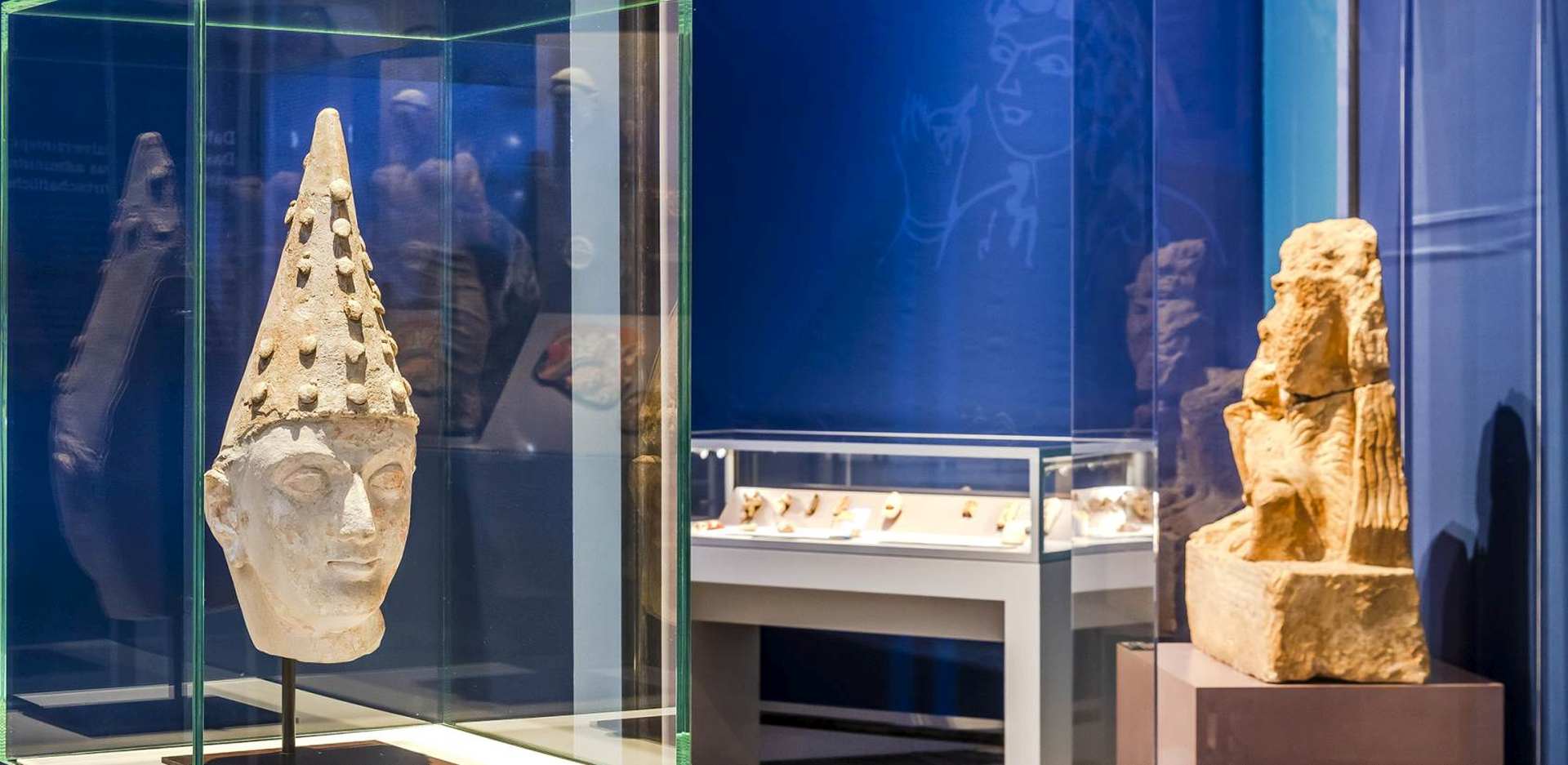
The Neues Museum and James-Simon Galerie have opened a new exhibition, Archaeological Treasures of Uzbekistan. It highlights Alexander the Great, archaeological finds from southeastern Uzbekistan and artworks from the Kushan Empire. Archaeological Treasures of Uzbekistan is open from May 4, 2022 to January 14, 2024. Visit this exhibition to familiarize yourself with Central Asia and its rich cultural depth: Often, our mainlined history, social studies classes and news outlets tend to sketch around the 1,545,741 square miles that comprise this swathe of landscapes, cultures, and histories to the point of erasure.
With an unprecedented number of Uzbek objects on display in Berlin for the first time, augmented with objects from the Staatliche Museen zu Berlin, the exhibition serves as a survey of archaeological artifacts from Uzbekistan. Located across two buildings, in the new James-Simon Galerie and the iconic Neues Museum (famous as the home of the Nefertiti bust of ancient Egypt), the exhibit is organized by each location’s focus. While the Neues Museum focuses on the military campaign of Alexander the Great and archaeological finds from military bases in southeastern Uzbekistan, the James-Simon Galerie’s focus is on artworks from the Kushan Empire. In total, the two-part exhibition spans a massive eight hundred years, from 400 BC to 400 AD,

The first part of experiencing the exhibition is finding it: It’s located up the stairs and to the right of the ticket office in the Neues Museum, in a series of austere rooms. It interweaves the story of Alexander the Great’s military campagns with the history of the region at a larger scale, creating a point of familiarity with European audiences and a bridge from a figure that is familiar to many to the rest of the region’s history and culture. Here, visitors learn about Alexander the Great’s background before the self-proclaimed “King of Asia” died at 33. The exhibition delves into his family’s genealogy (the claim that Alexander is a descendant of both Zeus and Achilles should likely not be taken seriously but did, it seems, give him a bit of credence in the ancient world). After a briefing on Alexander’s biography, visitors are led through the Greek Seleucid Empire and the Graeco-Bactrian Empire.
In these exhibition rooms, Alexander’s path through Central Asia is visually mapped out on a table that spans the gallery. Artifacts such as stamp seals, from Berlin museum collections, serve as illustrative props for the exhibition’s introduction. Historically informed and positioned by a pole of familiarity, visitors are ready to explore the second part of the exhibit, which focuses on Uzbek civilization itself.

Stepping over to the James-Simon Galerie, visitors encounter a broader survey of Uzbekistan and its history, addressing the artifacts featured within the larger milieu of their contemporaneous times. You’ll descend into a cavernous lower level to be welcomed with a summary of Alexander’s campaign and an introductory timeline to Uzbek history, which allows you to ground yourself in a starting point for this sequel. The gallery space has an open concept design and is divided up into channels funneling you through a broad, almost overwhelming, survey of Uzbek culture and history.

After the timeline, the first thing that will likely catch your eye is a large screen at the end of the room. Before the exhibition splits off to the right and left of the screen, look up and you can watch a video of drone footage from the archaeological sites featured in the exhibition, as well as the beautifully arid Uzbek landscape. The expo-like bannered channels function as both conduit and informational points during the exhibition, though with no clear routing, swimming among the region’s history and culture can be a bit overwhelming.

The breadth and historical richness explain why the exhibition has been split into two parts. The visitor is challenged to absorb the information presented, as the narratives follow several overlapping threads. Advantageously, the size of the gallery space permits the visitor to then turn and examine these never-before-seen artifacts from both at distance and up close. The subject matter could perhaps have supported a more structured pathway through almost a millennium of history, since it will be unfamiliar to many walking through the exhibition. As one wanders through the corridors, the dates, dominant cultures, and cultural movements seem to overlap; The banners seem to blur together.

With a focus on archaeology, the curators chose to display fewer, stand-alone pieces rather than a plethora of grouped objects. Therefore, those singular pieces become an easy focus of the room. This choice certainly speaks to a narrow, magnified look at individual pieces which may leave visitors questioning the historical grouping of the artifacts. Such an approach leaves the visual aids or banners to do most of the educational heavy lifting.
Berlin is perhaps the ideal location for the Uzbek pieces to make their world debut. Germany has a rich, but controversial history of leadership in archaeology, and the institutions of Berlin’s so-called Museum Island have staged fascinating archaeology exhibits in recent years. Archaeological Treasures of Uzbekistan is another effort that adds to the diversity of exhibitions on Museum Island and fulfills the purpose of museums themselves — to introduce the reader to what is unfamiliar and worthy of education.
Cover photo © Staatliche Museen zu Berlin / David von Becker
Written May 2023


Leave a Reply